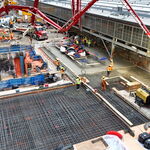slapped_chicken
New Member
There are lots of places that are building LRT lines and networks that cross cites. A few examples in the UK are Manchester and Nottingham. In Australia you have Melbourne which has a very large tram network then you also have Sydney that is building a few more lines as well. In the US Seattle and Portland both have fairly large LRT networks too.
Yea i know, I think what I was trying to say was that not a majority of riders will actually use a crosstown LRT line to ride "across town", even though the line crosses the entire city. Most would hop on and off at random points. I think it's great to build these "crosstown" LRT lines across the city's busiest throughfares so as long as it attracts high local ridership along most of the line (and we already see that with the bus services on routes like Finch, so great!); although there will be a rare rider that travels great distances on it (me, I'd do that for fun), most of these commuters would opt for faster services, like some proposed Sheppard RT like rainforest said, the 407 busway or whatever northern GTA rapid transit line is planned. We don't need to slap super-fast rapid transit on every corridor.
And on a side note since you mentioned Melbourne, I'd love to see the TTC take some inspiration from how streetcars are run in Melbourne. Hook turns, *full* transit malls, ROWs, and temporary ROWs during rush hour would be nice to have
Last edited:






